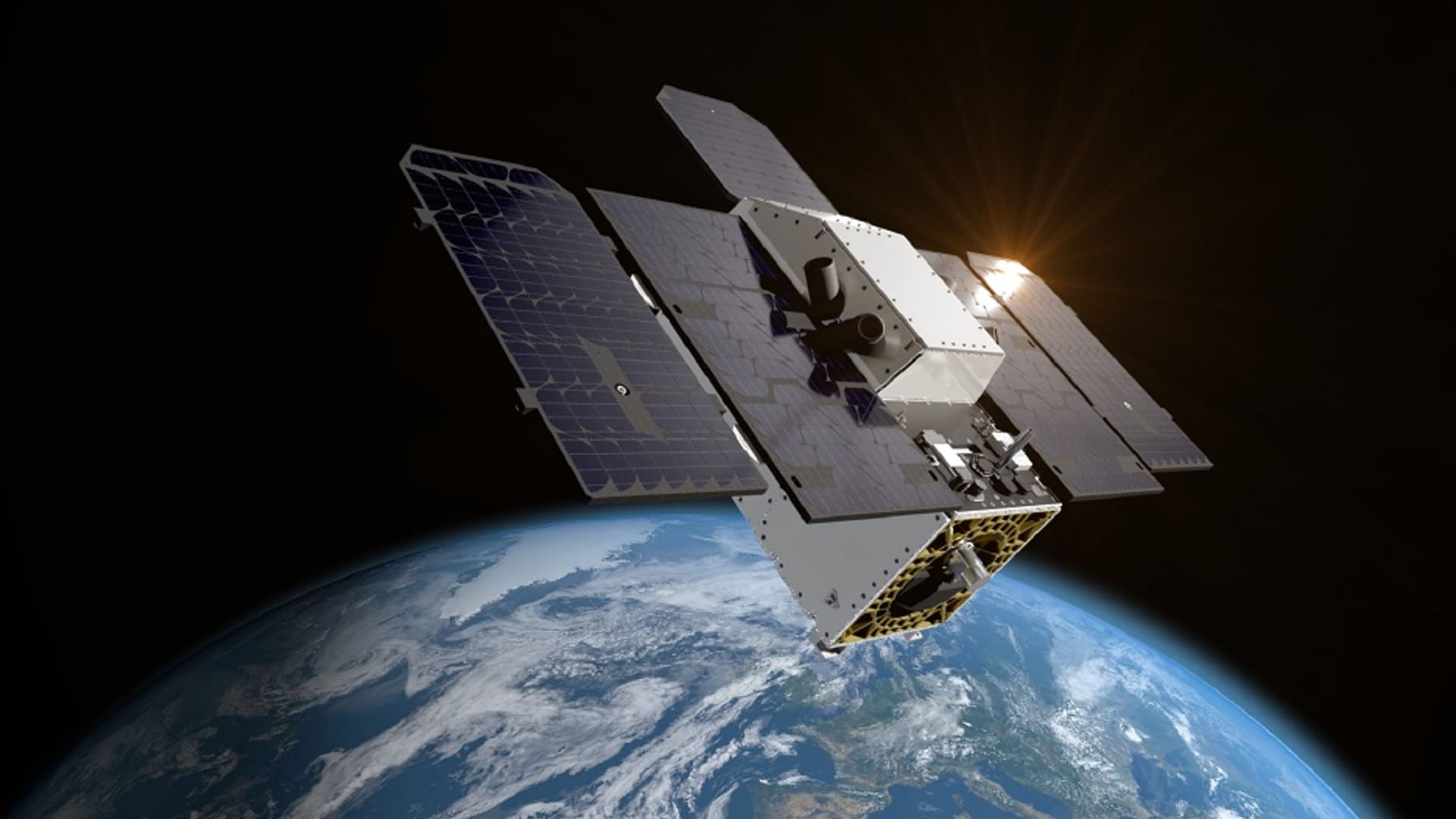
An artist’s depiction of a Tanager satellite in orbit.
Planet
PARIS — Planet is adding another type of imagery satellite to its product line, the latest expansion of the company’s data-gathering operations.
The company named the new satellites Tanager — named after a bird family, like the existing lines of Dove and Pelican satellites that it manufactures. But unlike those satellites, which have cameras and sensors capturing images in the same range as the human eye, the Tanager satellites will capture “hyperspectral” imagery, which divides the light spectrum into hundreds of bands of light.
Planet co-founder and chief strategy officer Robbie Schingler, speaking to CNBC at the 2022 International Astronautical Congress, said the company will use the hyperspectral satellites initially to detect methane output, saying it’s “the lowest hanging fruit” and has implications for business such as oil and gas, dairy farms and waste landfills.
Tanager satellites will collect 420 bands of spectrum, Schingler said, noting that detecting methane requires detecting just four bands.
“We decided to build a full-range imaging spectrometer,” Schingler said, with uses cases beyond methane to markets like “defense intelligence, like seeing disturbed earth – things like burying something or digging a tunnel.”
Planet aims to then tap customers in sectors like agriculture, mining, and intelligence with the Tanager line, with Schingler saying that “hyperspectral data from space is limited” as “the best hyperspectral sensors are either super classified, or they’re in planes.”
The company is building the Tanager satellites with the same spacecraft bus – which is the main body of a satellite – as its Pelican line, to leverage Planet’s vertical approach to manufacturing. The first two Tanager demonstration satellites are set to launch in 2023.
